Business Plus seats are the ‘next big thing’ in premium travel …. but how good are they?
Links on Head for Points may support the site by paying a commission. See here for all partner links.
Airlines (or their passengers) aren’t immune to trends.
Just look at how doored suites – unheard of in business class before Delta and Qatar Airways introduced them in 2017 – have proliferated. These days its rare to see a new seat introduced without the feature.
Love them or loathe them (what did doors ever do to you?!) doors are clearly more than a fad and are now seen as an essential part of the business class cabin. According to CAPA, the Centre for Aviation, less than 10 A350 aircraft were flying with business class suites in 2018. Six years later, the number stands at around 120.
With the debate largely settled, it is quickly becoming apparent that the next trend in premium cabin interiors is an exclusive new sub-class: so called ‘Business Plus’ seats.
Unlike most cabin trends, this is one that has taken a leaf from economy cabins and low-cost carriers. Airlines have for many years been selling ‘Economy Plus’ or ‘extra legroom’ front row seating, allowing customers to trade up to a marginally better seat for a little extra cash.
The practice has long crossed over into the mainstream with full service airlines such as Virgin Atlantic offering ‘Economy Delight’ with 34″ of legroom, bridging the gap between economy (31″) and premium economy (38″).
If booked in Economy Delight, you get the same service as any other economy passenger including the same meals – albeit that, at the front of the cabin, you’re more likely to get your first choice.
The same thinking is now coming to business class, with a number of airlines opting for new front row ‘Business Plus’ style seating. Whilst Virgin Atlantic was one of the first to launch such a product with its Retreat Suites on the A330neo, it has since been joined by:
- American Airlines, which is introducing the concept this year
- JetBlue, which features its Mint Studio front row seats on its transatlantic A321LR aircraft
- Lufthansa, which features a Business Plus suite (and the only seat with doors) as part of its new Allegris business class
I spoke to Andy Morris, Chief Commercial Officer of Northern Ireland-based seatmaker Thompson Aero Seating. Thompson is one of the largest suppliers of business and first class seats. He told me that:
“This concept is increasingly popular as airlines not only look for giving the best possible passenger experience, and/or an edge on their competitors but also potentially driving additional revenue. Upselling is becoming increasingly evident in all of our everyday lives and so we’re seeing increasing demand for this concept.”
Thompson was one of the first manufacturers to explore this hybrid seat, which sits within the existing business cabin.
“We began began developing the ‘First Class for Free’ concept way back in 2015. Our philosophy is the layout of passenger accommodation maximisation, whereby we ensure that each of our products is adapted for maximum efficiency to deliver the best return on investment for aircraft real estate to our airline customers.”
One reason that there is an increasing number of front-row business class seating is that it is a solution to a problem. Modern business class seats feature a tessellating layout, with the ‘foot coffin’ of the person behind adjacent to the row in front.
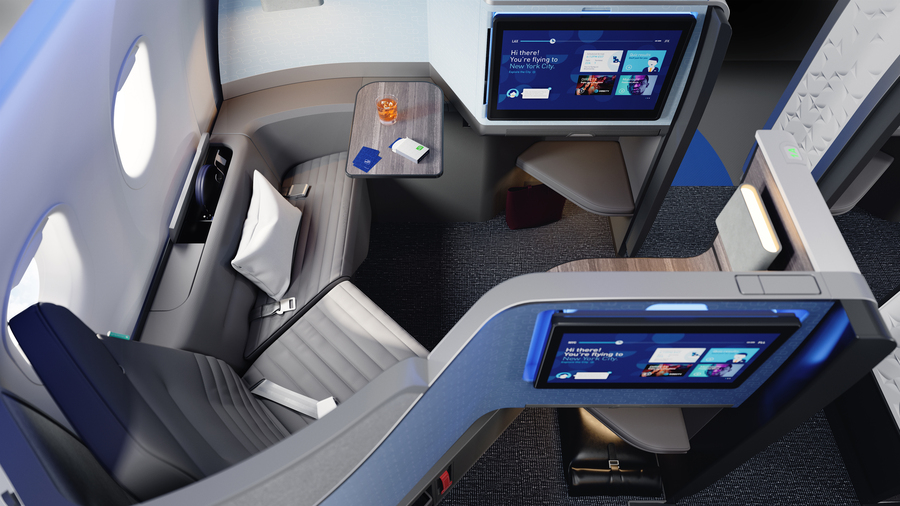
When seated in row 1, there is nobody in front of you and, as a result, there is extra space created.
“Business class front row seats require some type of monument installed to provide an ottoman and various other features, such as the in-flight entertainment screens. Historically these monuments may also have been to provide additional cabin crew stowage.”
In the past, this space would have been used for more storage or potentially even wasted. But airlines and seat makers have woken up to the possibilities of making better use of this space by creating special Business Plus seats, increasing the size of the footwell and adding additional amenities such as more storage.
Thompson worked with factorydesign, a London-based aviation design agency:
“We explored how we could use the same footprint of the front row monument, but instead of creating a hybrid design for use by the passenger and cabin crew for stowage, we asked how we could elevate the front row passenger experience.”
The result is a front-row seat that maximises the available space with a full-width (rather than tapered) seat in bed mode, larger in-flight entertainment screens, more storage and (often, but not always) improved privacy thanks to higher sidewalls.
I’ve experienced both Virgin Atlantic’s Retreat Suite and JetBlue’s Mint Studio, both of which are a £/$ upgrade from a standard business class seat. Other airlines, such as Air France, offer the bigger front row seats for free but exclusively to top frequent flyers.
From a hard product perspective, the seats are hard to fault. In both cases, you gain substantial additional personal space. In JetBlue’s case that comes as part of an ottoman side-seat. The Retreat Suite avoids the tessellation problem entirely and gives you the entire rectangular space of your seat, akin to many first class seating products such as on Malaysia Airlines.
But is a bigger seat enough to convince passengers to pay an additional £250 each way, which is what both Virgin Atlantic and JetBlue charge?
“One challenge we do see from some airlines is how such a ‘hybrid product’ is marketed and sold. For example, is it ‘business class plus’ or first class?”
If we return to the concept’s roots, with extra legroom economy seating on low cost carriers, you really are just paying for a better seat. Onboard experience is identical, and you don’t get other benefits such as an improved or free meal.
The first airlines to offer Business Plus, including Virgin Atlantic and JetBlue, have taken a minimal approach to upgrading other parts of the business class experience. You still get exactly the same meals, amenity kit and bedding as anyone else. The only ‘upgrade’ for Mint Studio customers is a set of pyjamas (seemingly only on red-eye flights) and, in the Retreat Suite, an additional pillow.
Does that approach wash its face with business class passengers paying hundreds to upgrade on long haul routes? I’m not sure, particularly if you’ve just spent £250 for the privilege.
Differentiation is key – otherwise, what’s the point in upgrading? Part of that includes communicating differentiation and validating expectations that you are getting something better than a standard business class seat.
One idea could be to provide an exclusive take on the standard amenity kit – perhaps in an accent colour – or a substantially better bedding set designed for the wider seat. You could even stock an upgraded champagne, exclusive to this front row.
For now, relatively few airlines are offering or flying a Business Plus seat. Even Virgin Atlantic, which introduced it in 2022, only offers it on five A330neo aircraft, making any investment in the soft product difficult to justify at this early stage.
As more airlines start offering it I hope we see a bit more creativity with the offering, particularly where the upgrade is paid-for. One interesting takeaway from my conversation with Andy is that the concept could be expanded beyond bulkhead rows:
“In the future this may not necessarily be restricted to the front row as we continue to further develop and maximise our airline customers’ revenue opportunities throughout the business class cabin.”
As First Class cabins get ever more luxurious, with fully enclosed suites and double beds, could a Business Plus sub-cabin allow airlines to offer an improved customer experience whilst avoiding comparisons with those top-end luxury suites?


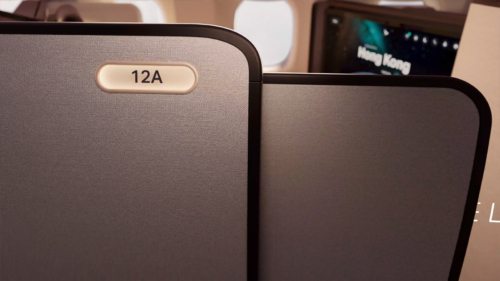
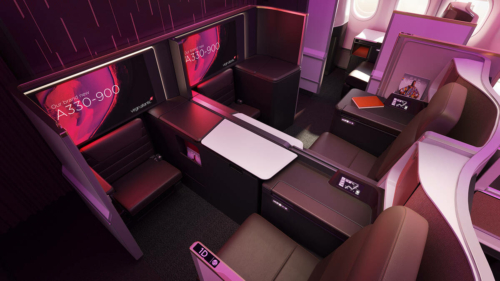
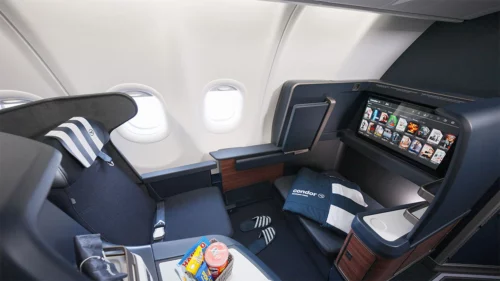
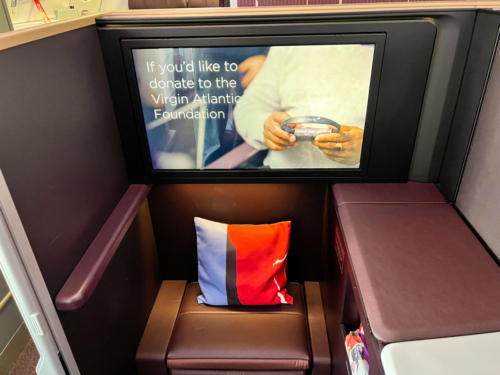






Comments (58)